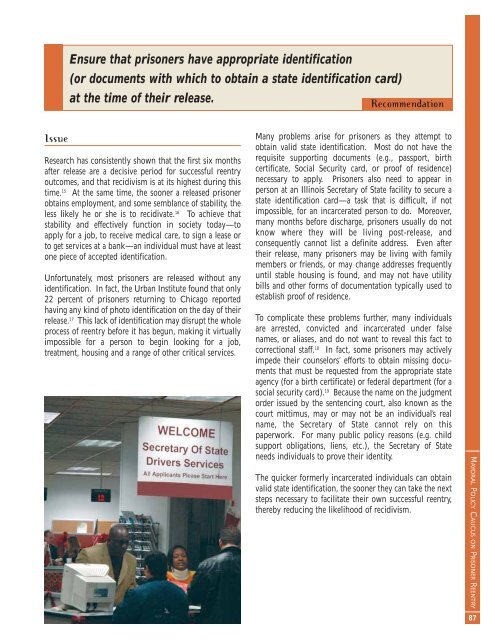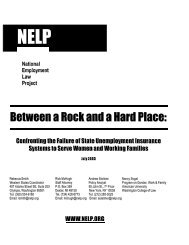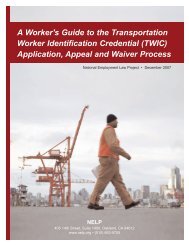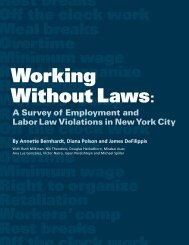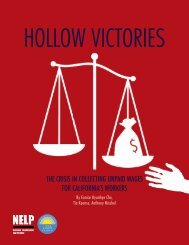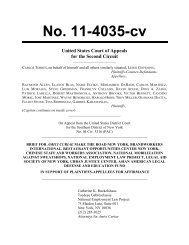Rebuilding Lives. Strengthening Communities.
Rebuilding Lives. Strengthening Communities.
Rebuilding Lives. Strengthening Communities.
Create successful ePaper yourself
Turn your PDF publications into a flip-book with our unique Google optimized e-Paper software.
Ensure that prisoners have appropriate identification<br />
(or documents with which to obtain a state identification card)<br />
at the time of their release.<br />
Recommendation<br />
Issue<br />
Research has consistently shown that the first six months<br />
after release are a decisive period for successful reentry<br />
outcomes, and that recidivism is at its highest during this<br />
time. 15 At the same time, the sooner a released prisoner<br />
obtains employment, and some semblance of stability, the<br />
less likely he or she is to recidivate. 16 To achieve that<br />
stability and effectively function in society today—to<br />
apply for a job, to receive medical care, to sign a lease or<br />
to get services at a bank—an individual must have at least<br />
one piece of accepted identification.<br />
Unfortunately, most prisoners are released without any<br />
identification. In fact, the Urban Institute found that only<br />
22 percent of prisoners returning to Chicago reported<br />
having any kind of photo identification on the day of their<br />
release. 17 This lack of identification may disrupt the whole<br />
process of reentry before it has begun, making it virtually<br />
impossible for a person to begin looking for a job,<br />
treatment, housing and a range of other critical services.<br />
Many problems arise for prisoners as they attempt to<br />
obtain valid state identification. Most do not have the<br />
requisite supporting documents (e.g., passport, birth<br />
certificate, Social Security card, or proof of residence)<br />
necessary to apply. Prisoners also need to appear in<br />
person at an Illinois Secretary of State facility to secure a<br />
state identification card—a task that is difficult, if not<br />
impossible, for an incarcerated person to do. Moreover,<br />
many months before discharge, prisoners usually do not<br />
know where they will be living post-release, and<br />
consequently cannot list a definite address. Even after<br />
their release, many prisoners may be living with family<br />
members or friends, or may change addresses frequently<br />
until stable housing is found, and may not have utility<br />
bills and other forms of documentation typically used to<br />
establish proof of residence.<br />
To complicate these problems further, many individuals<br />
are arrested, convicted and incarcerated under false<br />
names, or aliases, and do not want to reveal this fact to<br />
correctional staff. 18 In fact, some prisoners may actively<br />
impede their counselors’ efforts to obtain missing documents<br />
that must be requested from the appropriate state<br />
agency (for a birth certificate) or federal department (for a<br />
social security card). 19 Because the name on the judgment<br />
order issued by the sentencing court, also known as the<br />
court mittimus, may or may not be an individual’s real<br />
name, the Secretary of State cannot rely on this<br />
paperwork. For many public policy reasons (e.g. child<br />
support obligations, liens, etc.), the Secretary of State<br />
needs individuals to prove their identity.<br />
The quicker formerly incarcerated individuals can obtain<br />
valid state identification, the sooner they can take the next<br />
steps necessary to facilitate their own successful reentry,<br />
thereby reducing the likelihood of recidivism.<br />
MAYORAL POLICY CAUCUS ON PRISONER REENTRY<br />
87


